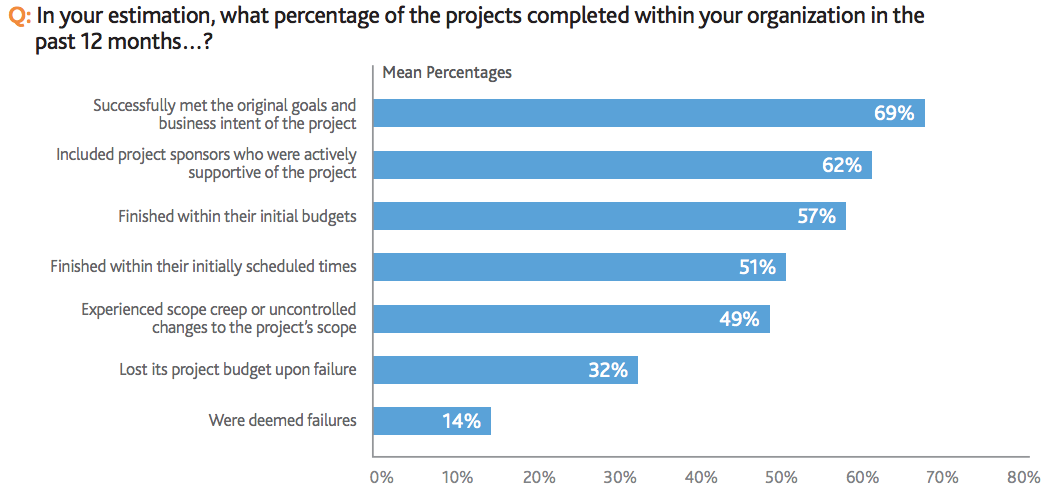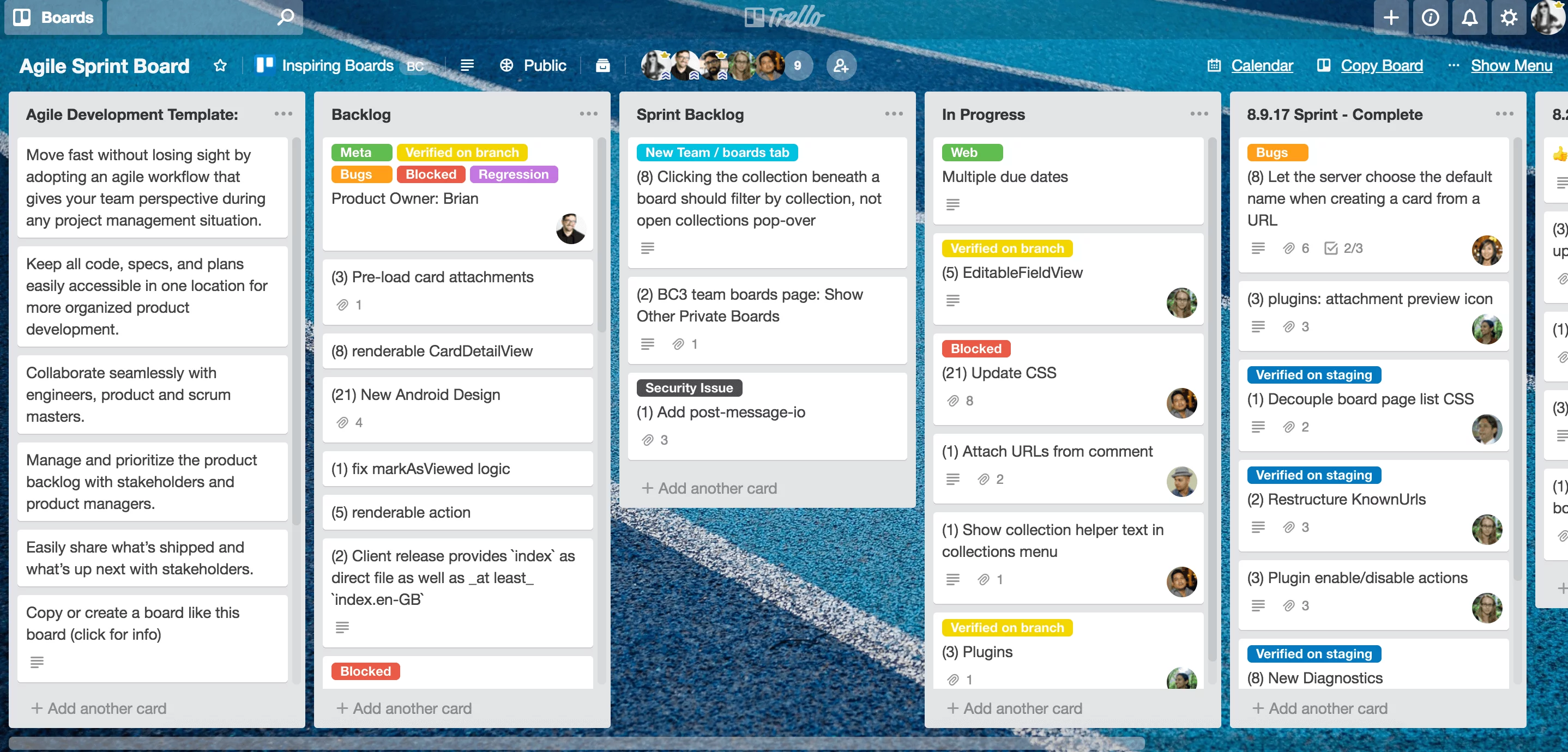Most businesses are familiar with the time and budget issues that can arise during the software development process. Unfortunately, cost overruns and missed deadlines have become relatively commonplace throughout the industry. The good news is that the right project management techniques can help you avoid these issues and ensure a successful outcome.
Let’s take a look at how to manage priorities and visualize your software projects to keep everything on track.
Cost overruns and missed deadlines have become commonplace in software development but improving visibility and communication can help reduce these negative outcomes. Share on XWhy Software is Hard to Manage
Software projects are notoriously difficult to manage. According to the Project Management Institute, 14% of software projects fail, 31% didn’t meet their goals, 43% exceeded their initial budget and 49% were delivered late. Many of these problems stem from ineffective project management and communication issues with stakeholders.

Problems with Software Projects – Source: PMI
Some of the most common challenges include:
- Estimation: Software developers often have trouble estimating the difficulty of a task, and therefore, the amount of time it will take to complete.
- Project Scope: Stakeholders frequently change specifications based on user feedback and changing business goals.
- Quality Control: Stakeholders and software developers must balance code quality with time constraints to meet the project’s goals.
The best way to address these problems is to increase transparency and promote strong communication. Product managers should have visibility into the current state of development at any given point in time while business and technical teams should have an open line of communication to ensure that everyone is on the same page.
Improving Visibility with Trello
There is no shortage of project management solutions geared towards software projects, including JIRA, Pivotal Tracker, Basecamp and many others. While the right choice depends on your specific requirements, Trello has become one of the most flexible solutions that can adapt to meet almost any requirements without excessive complexity.
[ Content upgrade with ID = 603 not found ]
Example of Trello Board for Project Management – Source: Trello
Trello boards have three main components:
- Boards: Different boards can be created for different projects and/or teams. For example, you may have different boards for software development and deployment since they may involve different teams.
- Columns: Each column represents a stage of development. For example, you may have Backlog, Current Sprint, In-Progress, Code Review, Testing, Ready and Deployed columns to represent each stage of the process.
- Cards: Each card represents a user story, job story, bug fix or task with a short description. Cards can be assigned to specific people and any updates can be posted directly to the card, including everything from questions to GitHub commits.
Trello boards make it easy for product managers to see who is working on what at any given point in time. At the same time, individual team members can communicate with anyone through mentions on each card while keeping a record of interactions that anyone can view, which is a welcome change using email or text messages.
Keeping Projects on Schedule
Project management solutions are excellent for increasing visibility for product managers into developer progress, as well as maintaining an organized backlog of features and requests, but communication is essential to keep all of the pieces moving smoothly over time. After all, a single blocked task is often enough to derail an entire project timeline.
[ Content upgrade with ID = 603 not found ]There are a few ways to improve communication:
- Daily Standups: Daily standups are short meetings at the beginning of each day to connect with coworkers and outline what happened the day before, what’s on the docket for the current day and what, if anything, is blocking progress.
- Weekly Meetings: Weekly meetings bring together the entire team to discuss the prior week’s progress, address any lingering concerns and even celebrate the successes to keep everyone motivated for the coming week.
- Behavior-Driven Development: BDD brings together a stakeholder, developer and test engineer to create business scenarios that are converted into executable specifications, which can help ensure that everyone is always on the same page before writing code.
Many teams, who follow the principles of Agile, work in two-week sprints that involve pulling user stories or job stories from the backlog and working on them over a two-week period. The goal is to launch new features, prune the backlog and fix any bugs in two-week cycles to keep the project on schedule and ensure that everyone is working toward the right goals at any point in time.
Best Practices to Remember
There are many different ways to implement Trello-like team visibility and Agile communication strategies, but there are a few best practices that tend to work best for everyone.
- Standardize Processes: Everyone should know what goes into a Trello card and when daily standups take place, as well as their roles and workflows within the project management solution, in order to avoid any issues.
- Start Simple, Grow Complex: Don’t start a small project with a 10-column Trello board and a 20-page SOP manual. By starting simple, you only need to introduce more overhead when it’s necessary and can move faster in the meantime.
- Assign a Point Person: A single product manager should be responsible for ensuring that these processes remain on track. If an obstacle arises, they should be tasked with clearing it and ensuring a smooth workflow over time.
- Maintain Open Communication: Use Slack or other tools to maintain open lines of communication apart from daily and weekly stand-ups—particularly when using remote teams that don’t work in the same office.
The Bottom Line
Software projects can be a challenge to manage, but the right tools can make all the difference. For example, a simple Agile workflow with a Trello board is often sufficient to keep small to mid-sized projects running on time and on budget. The key is ensuring that everyone has the right level of visibility and minimizes any misunderstandings early in the process.
If you’re interested in obtaining an accurate time and cost estimate for your project, Sharkbyte can help set reasonable expectations for internal development teams or external contractors. We also provide full-service development and team augmentation services designed to help you meet these goals and ensure a successful outcome.



